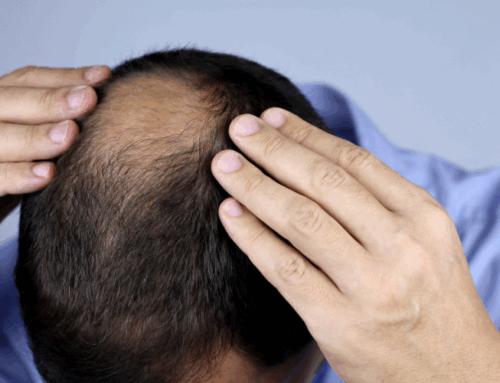Do you ever wonder why your hair feels dull or looks uneven, even though you’re doing all the right things? The truth is, the frequency of your haircuts could be playing a much bigger role in your hair health than you realize. Whether you’re trying to grow your hair longer, maintain a signature style, or simply avoid damage, knowing how often you should get your haircut is essential. But here’s the catch: there is no one-size-fits-all answer.
How often you should cut your hair depends on a variety of factors, your hair length, texture, thickness, current condition, and even your styling habits. In this guide, we’ll break down everything you need to know about setting the ideal haircut schedule tailored to your hair type, goals, and lifestyle.
Why Haircut Frequency Matters More Than You Think
You might assume that fewer haircuts mean longer, healthier hair, but the opposite is often true. Regular trims aren’t just about appearances. They directly affect your hair’s overall strength, manageability, and ability to grow without breaking. Trimming removes split ends before they travel up the hair shaft, causing more severe damage. It also helps retain shape, especially in stylized cuts like bobs, pixies, or layered looks.
Additionally, frequent trims maintain your hair’s moisture balance and texture, which contributes to a smoother, shinier appearance. By removing dead ends and damage, hair becomes easier to detangle, less prone to frizz, and more responsive to treatments. So whether you’re trying to preserve your length or rocking a short cut, keeping a consistent haircut routine is a fundamental part of hair care, just as important as shampooing or conditioning.
Trim vs. Cut, What’s the Difference?
Understanding the difference between a trim and a cut is key to developing a personalized haircut schedule. A trim generally involves removing around 1/4 to 1/2 inch of hair, typically to clean up split ends and maintain the existing shape of your hairstyle. Trims are recommended every 6 to 8 weeks depending on your hair’s condition and how fast it grows. They’re low-impact but high-reward when it comes to preserving your hair health over time.
On the other hand, a cut refers to a more noticeable change in length or style, think transitioning from shoulder-length hair to a bob or reshaping layers. Cuts are usually done less frequently but require more precise attention. If you’re switching up your look or correcting damaged or uneven hair, a cut might be necessary every 2 to 3 months. Knowing which one your hair currently needs helps prevent both under- and over-trimming.
Quick Chart: How Often to Cut Based on Hair Length, Type, and Style
Here’s a handy reference to quickly determine your ideal haircut frequency based on various hair characteristics:
| Hair Type or Style | Recommended Trim Frequency |
| Short styles (pixie, fade) |
Every 3–4 weeks |
|
Medium-length hair |
Every 6–8 weeks |
|
Long hair |
Every 8–12 weeks |
|
Curly or coily hair |
Every 8–10 weeks |
|
Chemically treated or colored |
Every 6–8 weeks |
|
Bangs or fringe |
Every 2–4 weeks |
|
Heat-styled hair (frequent) |
Every 6–8 weeks |
|
Hair with layers |
Every 6–8 weeks |
|
Growing out hair |
Every 10–12 weeks (dusting) |
| Split end-prone or damaged | Every 4–6 weeks |
This chart is a general guide, personal lifestyle, goals, and hair condition will still affect how often you should book that trim.
When Should You Cut Based on Hair Length?
Your hair length plays a major role in determining how often you should trim or cut it. Different lengths have unique maintenance needs, and the longer the hair, the more susceptible it becomes to breakage, split ends, and uneven growth. Whether you’re sporting a chic pixie or waist-length locks, here’s how to time your trims effectively.
Short Hair
Short styles like pixies, fades, or cropped cuts tend to lose their shape the fastest. Because these styles rely heavily on precision and clean lines, even a small amount of growth can throw off the overall look. To maintain that fresh-cut feel and sharp style, aim to visit the barber or stylist every 3 to 4 weeks. This schedule not only preserves the shape but also keeps the hair looking polished and intentional. Skipping trims on short hair can lead to awkward grow-out phases and a generally unkempt appearance. To maintain that fresh-cut feel and sharp style, aim to visit the Fontana Barber Shop every 3 to 4 weeks.
Medium-Length Hair
Medium hair, such as lobs, shoulder-length styles, or layered cuts, offers a balance of low-maintenance and styling flexibility. It doesn’t grow out as awkwardly as short hair but still needs regular attention to stay healthy and maintain its form. Trimming every 6 to 8 weeks helps prevent split ends, preserve your shape, and make styling more manageable. This interval also supports gradual growth goals while keeping your ends neat and strong.
Long Hair
Long hair may seem like it can go months without a trim, but skipping regular cuts is one of the biggest culprits behind breakage and thinning ends. To maintain the health and thickness of your long hair, get a trim every 8 to 12 weeks. You might not need to reshape the style as often, but regular “dusting” (removing just the very tips) can prevent damage from spreading. A consistent routine is part of what you’ll find at our Premium Experience.
Layers
Layered cuts are particularly prone to losing shape if not trimmed regularly. As your hair grows, layers can become uneven, leading to a messy or bulky appearance. To keep layers looking intentional and flattering, trim them every 6 to 8 weeks. This type of upkeep is often included in our Specialty Services.
When Should You Cut Based on Hair Thickness?
Hair thickness, whether fine or thick, determines how resilient your hair is and how often it needs maintenance. Each has unique needs when it comes to trimming schedules and styling consistency.
Thick Hair
Thick hair is often more resistant to damage, but it can become overly heavy or bulky between cuts. Trimming every 6 to 8 weeks helps remove weight and prevent split ends. Styling and managing volume can become easier with consistent trimming. Locations like our Rialto Barber Studio help provide that balance with precision cuts for thick hair.
Thin Hair
Thin or fine hair, on the other hand, is much more prone to breakage, split ends, and limpness. For this reason, it requires more delicate care. A trim every 4 to 6 weeks is ideal. You can always refer to our Gallery to see results from clients with similar hair types.
When Should You Cut Based on Hair Texture?
Hair texture refers to how straight, wavy, curly, or coily your strands are, and each texture type has unique structural needs. The tighter the texture, the more fragile the hair tends to be, often requiring customized care between cuts.
Coarse or Wiry Hair
Coarse hair has a thicker diameter and is often more porous, making it susceptible to dryness and rough ends. Because it naturally feels thicker, many people assume it needs less trimming, but this can lead to excessive dryness or frizz. A trim every 6 to 8 weeks is ideal to maintain manageability and prevent breakage. Moisturizing products combined with regular trims can significantly improve the appearance and health of coarse hair over time.
Fine Hair
Fine hair, regardless of how straight or curly it is, requires gentler trimming. Routine trims every 4 to 6 weeks help maintain volume. At our Fontana Barbershop 2, stylists are trained to maintain the structure fine hair needs.
Wavy, Curly, or Coily Hair
Wavy, curly, and coily textures tend to be drier and more prone to tangling and breakage. Since shrinkage can hide damage, it’s important not to rely solely on visible length. Curls can go slightly longer between trims, about 8 to 10 weeks, but they still require regular maintenance to avoid split ends and frizz. Shaping the curls enhances definition and helps maintain overall symmetry. Protective styles and moisture-rich products between trims can extend the time between salon visits.
When Should You Cut Based on Hairstyle or Hair Goals?
Your hairstyle and personal goals, whether you’re trying to grow out your hair, maintain a precise look, or keep it damage-free, will significantly influence how often you need a cut. Different styles and objectives require different levels of maintenance and trimming frequency.
Straight or Wavy Hair
Straight and wavy hair tends to show split ends and uneven growth more visibly than curly textures, which means it often needs more frequent trims to keep it looking tidy and healthy. For those who wear sleek, straight styles or gentle waves, scheduling a trim every 6 to 8 weeks is ideal. This not only helps preserve shine and structure but also prevents fraying at the ends, which can make your hair look thinner over time. If your goal is length, ask your stylist for “micro-trims” to preserve most of your growth while still keeping the ends clean.
Kinky or Curly Hair
Curly and kinky hair types are naturally drier and more fragile due to the coil pattern, which makes it harder for oils from the scalp to travel down the shaft. Because of this, curly hair often benefits from less frequent trims, about 8 to 12 weeks apart, depending on damage and styling habits. That said, curly styles can lose definition and shape without regular maintenance. Trims help maintain bounce and reduce single-strand knots, especially if you wear your curls in wash-and-go styles or twist-outs.
Coily Hair
Coily hair (Type 4 textures) is the most delicate of all. It’s tightly coiled, with minimal natural lubrication, making it prone to breakage and shrinkage. Even though damage is harder to see, trims are crucial for preventing knots, tangling, and thinning ends. Schedule a trim every 10 to 12 weeks to maintain healthy, defined coils and avoid length retention setbacks. If you’re protective styling often (like braids or twists), a trim after every second install is usually enough to keep breakage at bay.
When Should You Cut Based on Styling or Treatment Habits?
How often you heat style, color, or chemically treat your hair should also factor into how often you get a trim. These processes, while useful for achieving certain looks, can weaken your hair over time, making regular maintenance even more important.
Frequent Use of Hot Tools
Using heat tools like flat irons, curling wands, and blow dryers exposes your hair to high temperatures, which can weaken the hair shaft and lead to split ends. If you heat style more than two to three times per week, you should trim your hair every 6 to 8 weeks to remove heat-damaged ends. Investing in heat protectants and limiting the temperature setting can extend the time between trims, but consistent cutting is key to preserving the overall health of your hair.
Chemically Treated Hair
Hair that’s colored, relaxed, permed, or bleached is particularly vulnerable to dryness, breakage, and porosity issues. Chemicals strip the hair’s natural proteins, weakening the cuticle and leading to split ends and frizz. If your hair undergoes regular chemical treatments, you should trim it every 4 to 6 weeks. This schedule allows you to maintain the health and elasticity of your hair while still enjoying the benefits of chemical styling. Regular deep conditioning and protein treatments can also help reduce the damage between cuts.
What If Your Hair Falls Into Multiple Categories?
Many people’s hair doesn’t fall neatly into one category. You might have long, curly, and chemically-treated hair, or short, fine hair that’s frequently heat-styled. In these cases, it’s important to prioritize the most damaging or maintenance-intensive factor when determining how often to trim.
For example, if your hair is thick and curly but also bleached, the bleach damage may necessitate more frequent trims, even if curls typically require less maintenance. It’s all about balance and being in tune with your hair’s condition. Watch for signs like split ends, dryness, thinning, or uneven layers. These are your indicators that it’s time for a cut, regardless of how long it’s been since your last trim.
Listening to your hair’s needs and consulting a professional stylist or barber will help you make the most accurate call. Don’t wait for your hair to look “bad” before you take action; staying ahead of the damage is always better than repairing it later.
How to Keep Hair Healthy Between Trims
Even if you’re following the ideal trim schedule, how you care for your hair between haircuts can make a major difference in its health, strength, and appearance. Whether you’re stretching time between salon visits or just trying to prevent damage, these habits and routines will help you maintain healthy, thriving hair in the long run.
Nourish from the Inside Out
Healthy hair starts with a nutrient-rich diet. Vitamins and minerals like biotin, iron, zinc, omega-3 fatty acids, and vitamin D play essential roles in hair strength and growth. Eating whole foods such as leafy greens, eggs, nuts, salmon, and berries helps promote a healthy scalp and robust follicles. If you struggle with deficiencies, consider consulting your doctor about taking targeted supplements to support hair health.
Hydrate and Moisturize
Dryness is one of the biggest causes of breakage and split ends. Make deep conditioning a regular part of your routine, and aim for a weekly hair mask or treatment focused on moisture and repair. For curly and textured hair, use leave-in conditioners, oils, or creams that offer prolonged hydration. Water-based products and natural oils like argan, coconut, and jojoba oil can seal in moisture and add shine between trims.
Protect from Damage
Protecting your hair from daily stressors is crucial. That includes:
- Use heat protectant sprays before blow-drying or flat-ironing.
- Sleeping on a silk or satin pillowcase minimizes friction and prevents tangling.
- Wearing protective styles like braids, buns, or twists to reduce mechanical damage.
- Limiting tight hairstyles that tug at the scalp or hairline.
Be gentle when detangling, use wide-tooth combs or detangling brushes and always start from the ends, working your way up.
Cleanse Carefully
Choose a gentle shampoo that matches your hair type and won’t strip your strands of natural oils. Over-washing, especially with harsh, sulfate-laden shampoos, can dry out your hair and scalp, leading to brittle ends. For most people, washing 2 to 3 times per week is sufficient. Use lukewarm water and avoid excessive scrubbing to protect the hair cuticle.
Maintain Salon-Quality Care at Home
The gap between salon visits doesn’t have to mean a drop in quality. Use salon-grade products, avoid DIY chemical treatments unless you’re experienced, and invest in tools that are safe for your specific hair type. Even basic practices like proper towel-drying (patting instead of rubbing) can prevent damage and extend the life of your cut.
Stay Consistent with Your Routine
Consistency matters more than perfection. Whether your goal is growth, volume, or shine, maintaining a routine tailored to your hair’s unique needs will help you get the most from each cut. Track what products work best, how your hair responds to different styles, and adjust based on seasonal changes or lifestyle habits.
Expert’s Suggestions: Regular Trims Are the Secret to Long-Term Hair Health
So, how often should you actually get your haircut? The answer depends on your hair’s length, type, texture, health, and how you style it. While general guidelines exist, the key is paying attention to what your hair is telling you. Are the ends splitting? Is your style losing its shape? Is your hair harder to detangle or look dull?
Regular trims are not just about aesthetics, they’re a cornerstone of long-term hair health. Whether you’re aiming to maintain a fresh fade, grow long, healthy curls, or just prevent damage, staying consistent with cuts and proper care in between makes all the difference.
By building a routine around your specific needs and staying committed to care, you’ll not only look better, but you’ll feel better too. Great hair isn’t just a look; it’s a lifestyle.






Leave A Comment